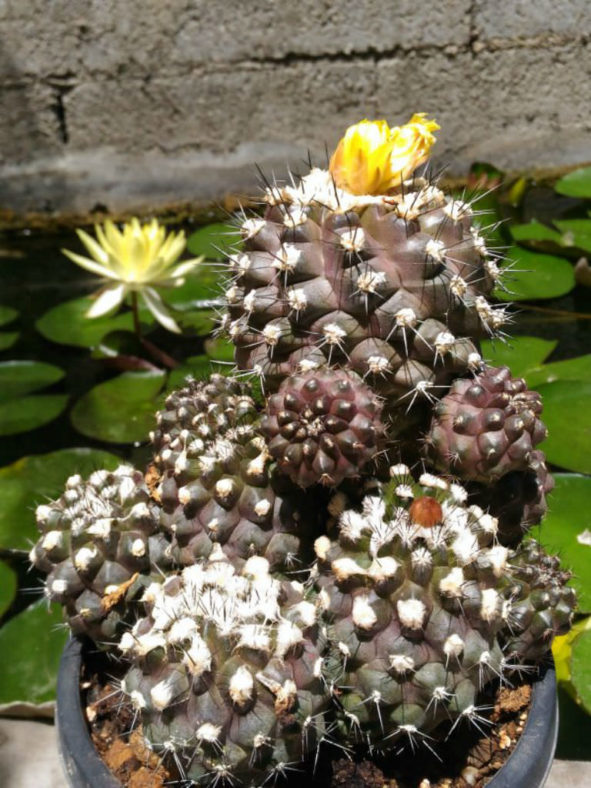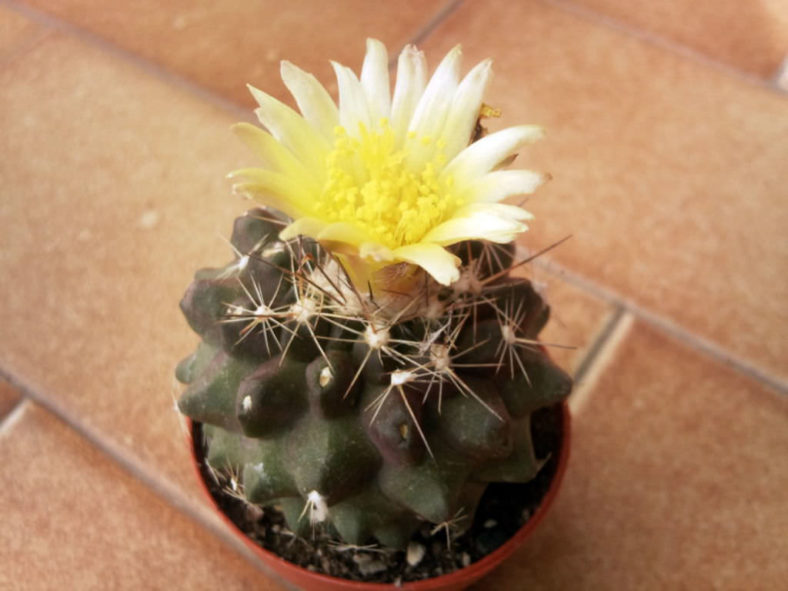Scientific Name
Copiapoa humilis (Phil.) Hutchison
Synonym(s)
Copiapoa chanaralensis, Copiapoa humilis subsp. humilis, Echinocactus humilis
Scientific Classification
Family: Cactaceae
Subfamily: Cactoideae
Tribe: Notocacteae
Genus: Copiapoa
Origin
Copiapoa humilis is native to Chile. It occurs in the Antofagasta Province at elevations that range from 980 and 4,270 feet (300 and 1,300 m)
Description
Copiapoa humilis is a small cactus with spherical stems with distinct tubercles arranged in 8 to 16 somewhat spiral ribs. The stems can grow solitary but usually produce offsets around the base, forming a dense clump with age. They are purplish-red to almost black when young, becoming olive-green to tan as they mature. Individual stems can reach up to 3.2 inches (8 cm) in height and 4 inches (10 cm) in diameter. The spines are grayish-white to yellowish when young, become black with age, and measure up to 1.4 inches (3.5 cm) long. Each areole is white-felted and bears clusters of 1 to 3 central and 7 to 13 radial spines.
The fragrant flowers are yellow, measure 1.6 inches (4 cm) in length and diameter, and appear at the top of the stems in late spring and early summer. The fruits are naked, spherical, green to red or brown, and can reach up to 0.3 inches (0.8 cm) in diameter.

Hardiness
USDA hardiness zones 10a to 11b: from 30 °F (−1.1 °C) to 50 °F (+10 °C).
How to Grow and Care
Despite the extreme and specific conditions in their habitat, Copiapoas, as a whole, are surprisingly easy to cultivate. This genus is very forgiving, from seed sowing to caring for mature plants. While staying manageable in size, Copiapoa in cultivation will flower from a young age and reliably so each following year.
These cacti want exposure to half or full sun. If they are in full sun, they must be in a position with good air circulation or risk sunburn.
Watering should be extremely poor. The soil must dry out completely between waterings. They should, however, be suspended during mid-summer. In this period, instead of watering, spraying the plant early in the morning, before the temperature warms up, thus simulating the conditions they would have in their natural environment will be appropriate.
The soil should be formed from a mineral substrate (granite crumbled) mixed with very little universal soil.
Learn more at How to Grow and Care for Copiapoa.
Links
- Back to genus Copiapoa
- Succupedia: Browse succulents by Scientific Name, Common Name, Genus, Family, USDA Hardiness Zone, Origin, or cacti by Genus
Photo Gallery
Click on a photo to see a larger version.


